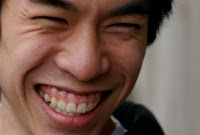As many a six-year-old aspiring princess will tell you, there are many roads to royalty. One can, for example, marry a prince (aka the Kate Middleton route), overthrow an existing monarch by force and declare oneself royal ruler (slightly bloodier), or be sure to finish one’s evening jelly? If you happen to be a honeybee, the latter is definitely the way to go. It turns out that hive royals are not selected through democratic election, military coups, or even heredity succession. Instead, the lucky larva that ends up as hive queen is singled out by her brand of baby food.
We all learned in high school biology that our height, eye colour, ear-lobe type, and potato chip preference are determined by our DNA. That is to say that the random tango of our parent’s chromosomes pre-determines the basic physiology of the being that starts to develop when sperm meets egg. So queen bees (which develop faster, live longer, and are much bigger than their worker bee counterparts) must have the blue-blooded genes to match, right? Wrong! In true rags to riches form, queen bees are as plain-jane as they come when they hatch. It’s their princely diet that allows them to ascend beyond their worker bee sisters.
The genetics of a honeybee hive are both complex and highly scandalous to their WASP neighbours. In short, the queen and all of the worker bees are female, and each have 32 chromosomes. Males (or drones) have half as many chromosomes and basically live to mate, producing thousands of genetically identical sperm cells. The queen mates with several drones to produce a slew of daughter worker bees. These have in common with each other the same proportion of maternal DNA as humans do with our siblings. The difference between us and our fine furry flying friends is that all of the sperm from a single drone is identical, meaning that offspring from the same father are genetically closer than human sisters. The research community has not offered any insight into whether this means they had better slumber parties.
So what do the genes of a queen bee look like? Just like those of all her worker bee sisters. Although the female bees in a hive are not genetically identical, they are all sisters (or half sisters) and have similar diversity to that in a blended modern family. What gives the queen her very distinctive physical features and lifestyle is therefore not her DNA, but rather the way in which her body develops. In other words: in the honeybee world the “nature vs. nurture” debate is truly a no-contest.
In the larval stage, baby bees are tended to by their worker bee sisters. When the hive needs a new queen so the old queen can die or move out colonial-style to build a new hive and expand the empire, the workers feed select larvae “royal jelly.” This exclusive confection is produced by glands on their heads and contains a compound called royalactin. In dramatic magic potion fashion, this compound induces a plethora of physiological responses ultimately resulting in a new melliferal monarch.
Although Lady Gaga might disagree, if you ask a queen bee what makes her so fabulous she will most certainly not reply, “I was born this way!”



